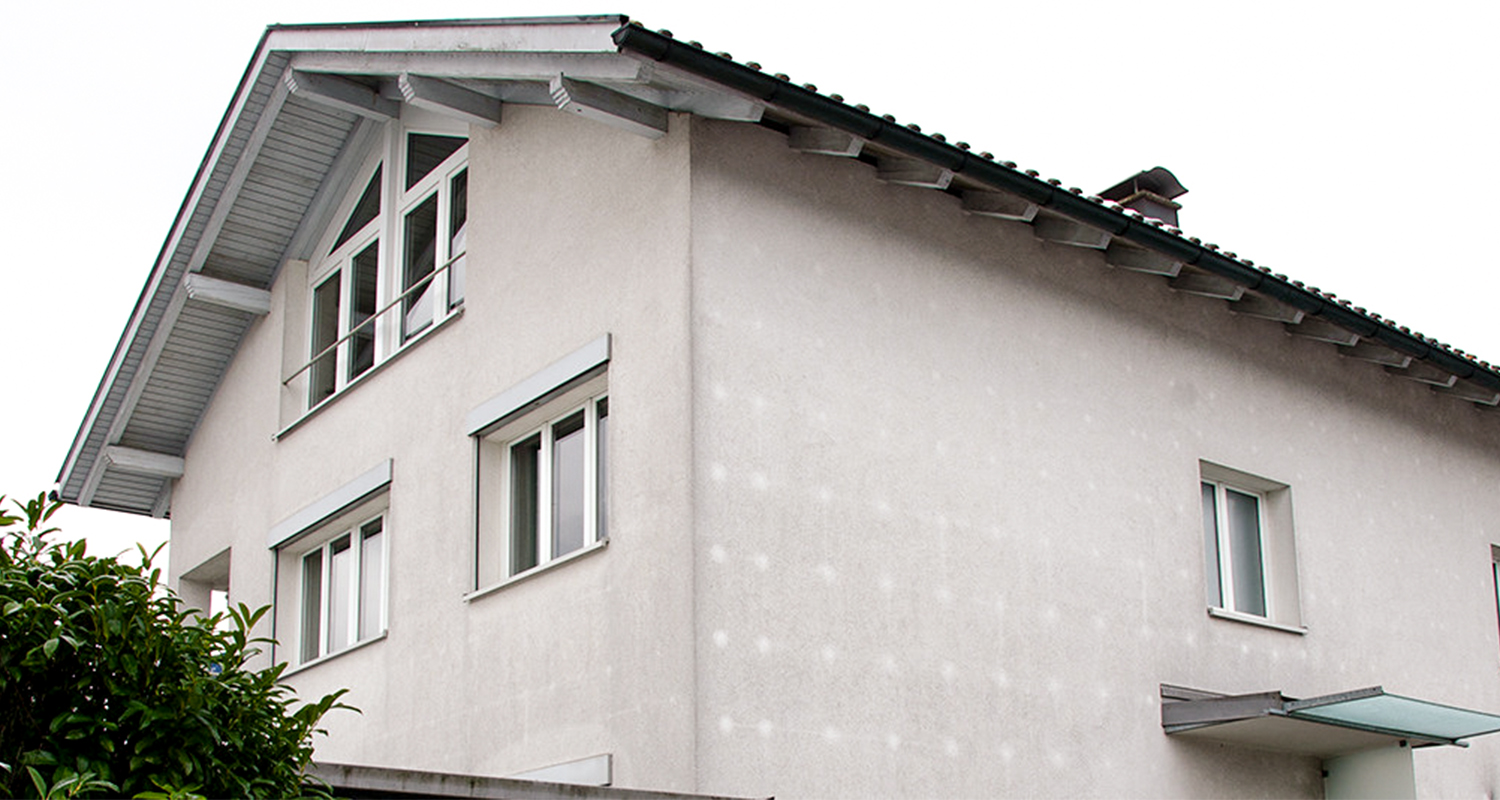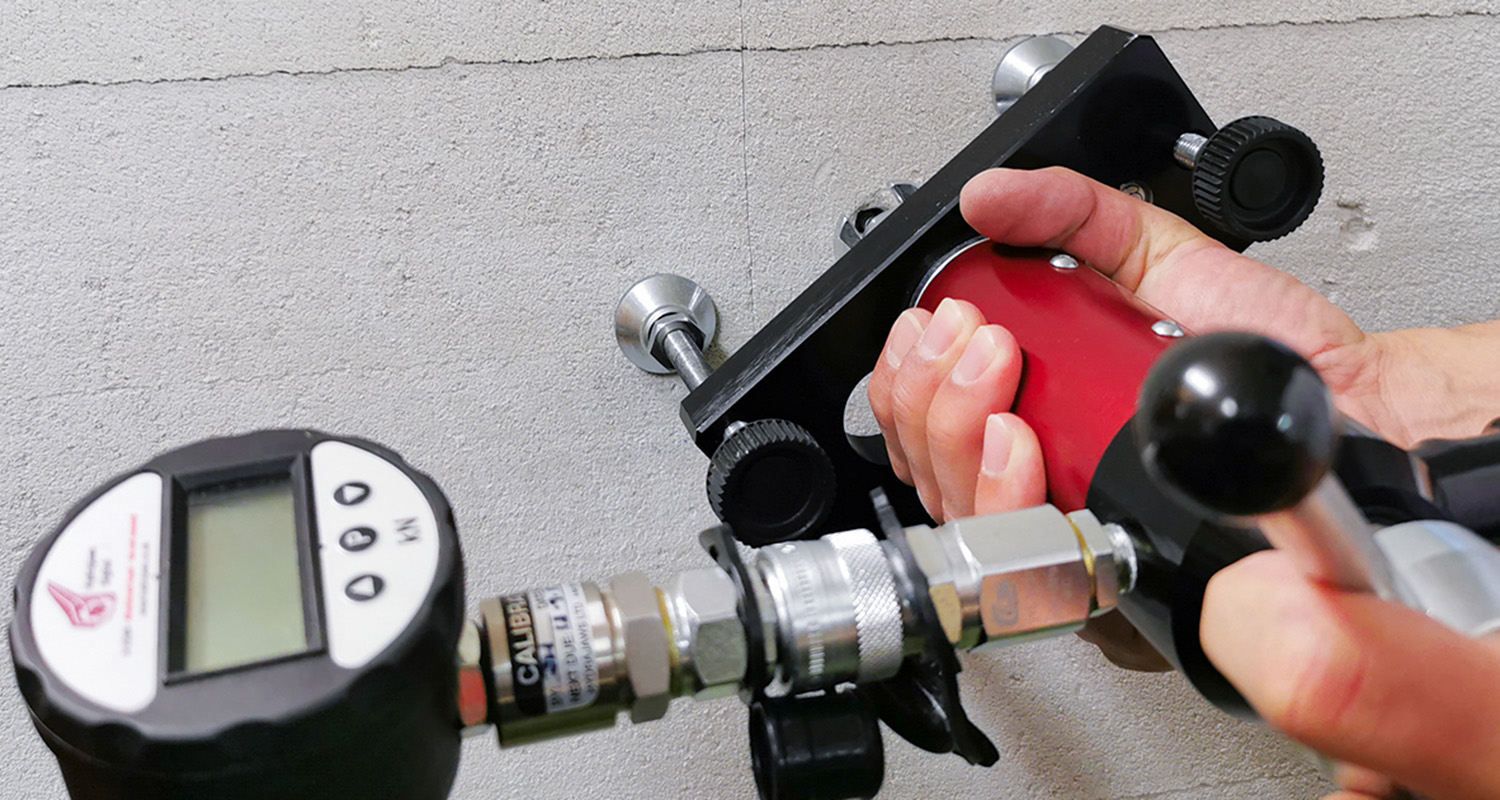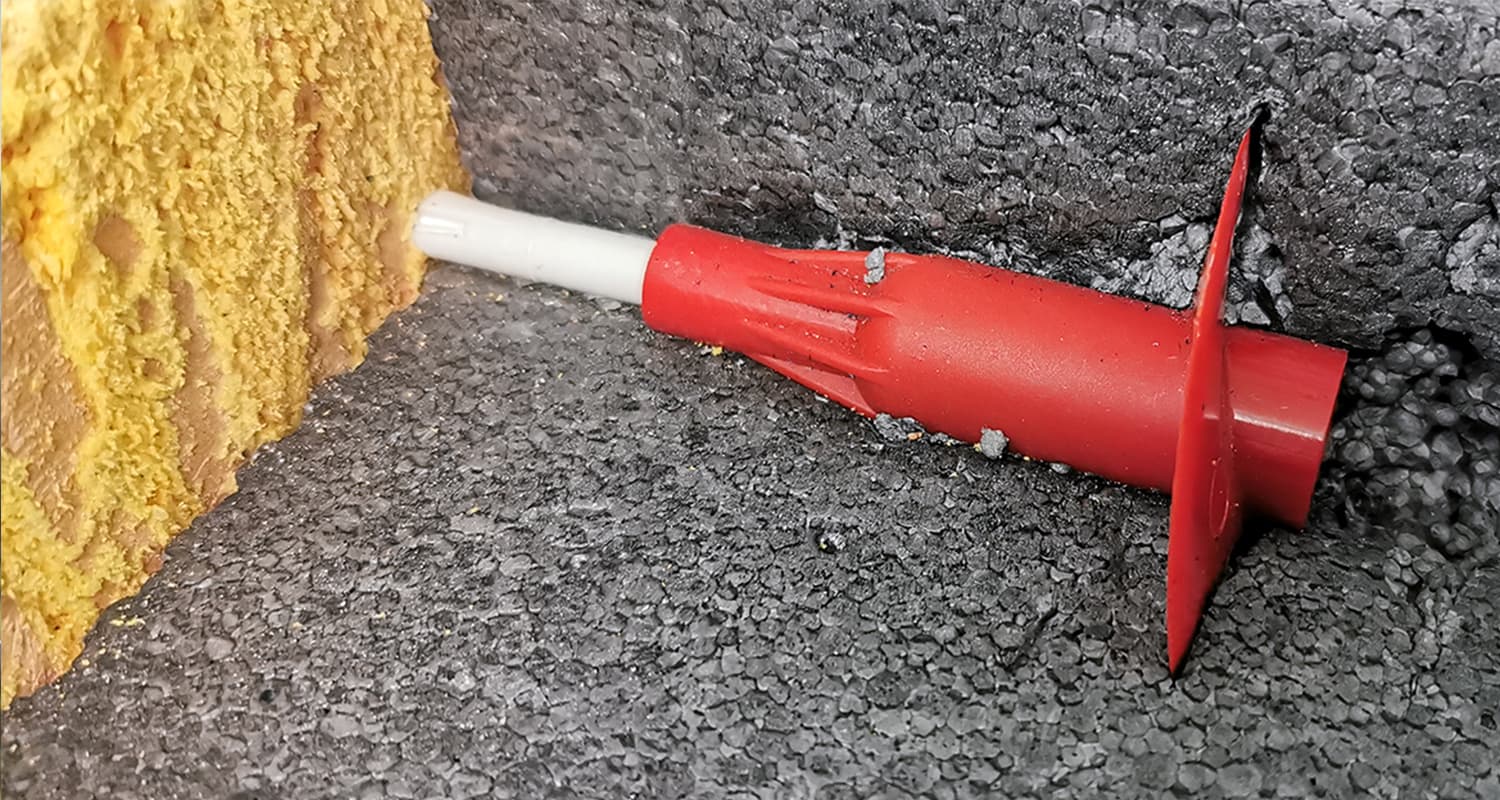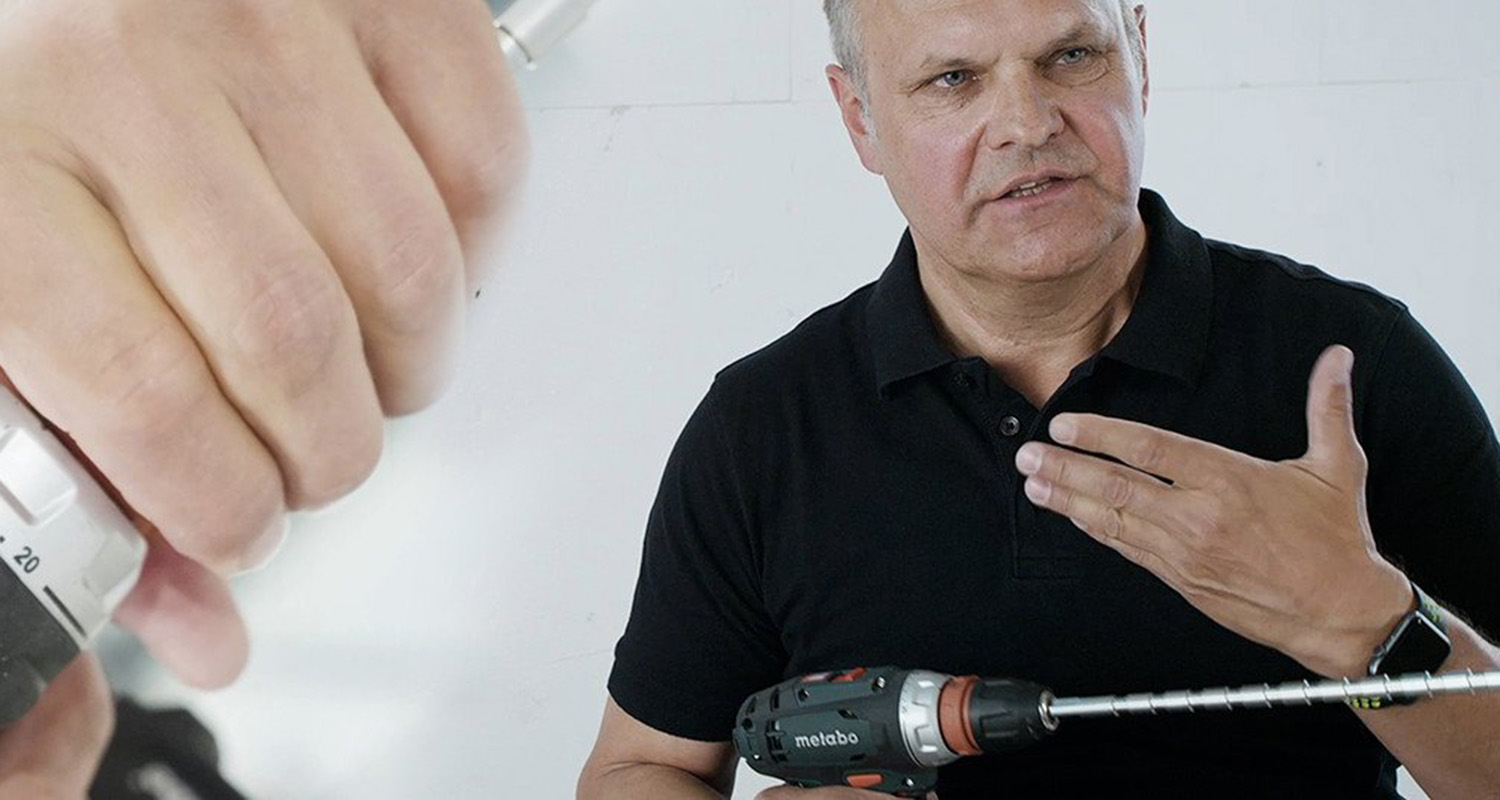It’s a common sight, even though unintended: Insulated façades often look like they are ill with measles. Experts also speak of the leopard pattern. Each spot where a dowel has been set, leaves a dowel mark in a lighter shade. This can be avoided – and quite easily, too.
The thermal insulation is installed, the façade freshly rendered. All is well for now. But gradually, the measles set in, the facade is dotted with circular light patches caused by thermal bridges in the anchoring area. Depending on the type of dowel, the render has a higher surface temperature in that area, which, for example, makes rain water dry faster. Therefore, no algae can form in the anchoring area and less dirt settles.
Dowels available for external thermal insulation composite systems (ETICS) differ from each other by the material of the dowel screw and the setting technique. You can choose from materials such as plastic, steel or plastic-coated steel. The setting technique differentiates between knock-in pin dowels and screw dowels. The type of dowel determines the position: Either the dowels are mounted flush with the surface, countersunk near-surface and sealed with a cap, or deeply countersunk and sealed with a plug. As an alternative to caps and plugs PU foam is used to close the drill hole.
The most important factor for the right choice of dowel is the thermal quality. The thermal transmittance of the dowel is expressed by the Chi value. The lower the Chi value the lower the probability that dowel marks will form. The market offers dowels with Chi values of 0.000 W/K – dowels that can avoid the light patches all together.
The bottom line is that the use of dowels with a Chi value of 0.000 W/K helps to avoid light dowel marks.
Dowel marks can also leave dark patches on a façade. What’s the difference?
If dowels are not countersunk but instead set flush with the surface, after a few years the dowels can leave a dark patch as a mark. Above too deeply installed dowels the rendering layer is thicker. These spots consequently dry slower than the rest of the façade area, which provides a hotbed for dirt, fungus and algae.
The bottom line is that dowels countersunk close to the surface are closed with caps and deeper countersunk dowels are sealed with plugs. They are preferable to dowels that must be set flush with the surface, because caps and plugs guarantee a homogenous surface with the rendering layer, maintaining the same thickness across the entire façade area. Countersunk dowels avoid the risk of dark patches.



